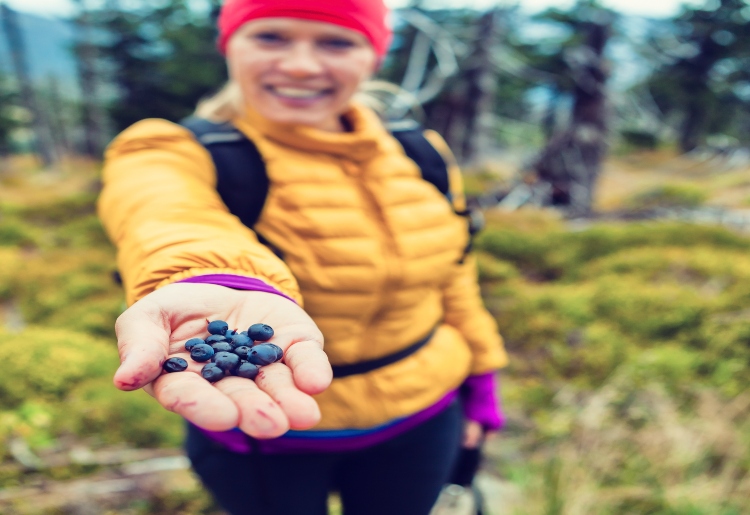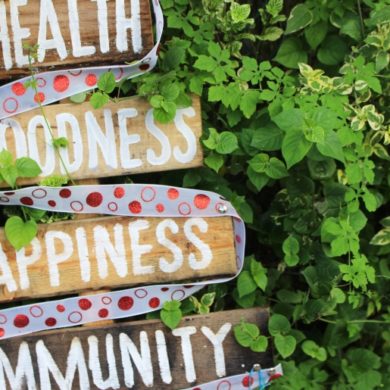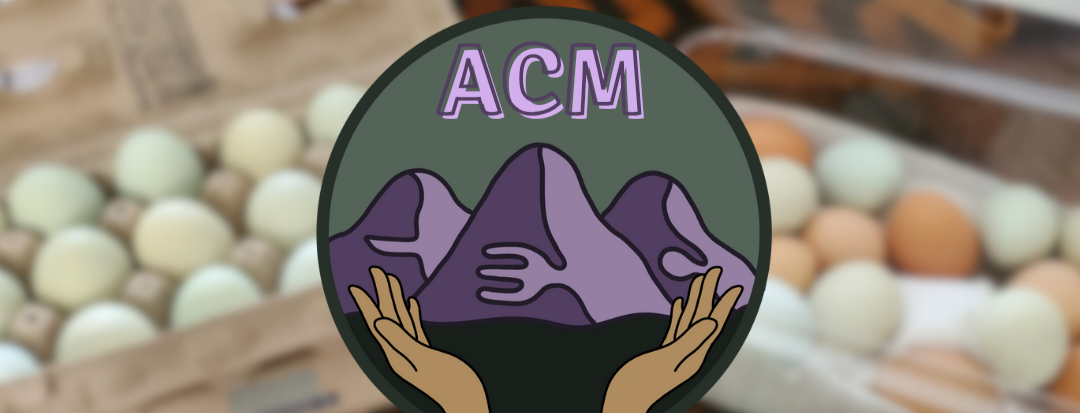
One of the most significant developments taking shape when it comes to global sustainability and community resilience will soon transform a little-known community called Chuathbaluk, tucked away in a beautiful, yet completely remote and isolated area of southwestern Alaska, along the 700-mile-long Kuskokwim river. If you like The Venus Project, The Zeitgeist Movement, One Community Global, New Earth Nation, or are interested in the viability of a resource based economy or a host of other projects and organizations taking us toward a more sustainable world, then you’ll love A.R.K. and what they are doing in Alaska.
On June 14th 2014, this practically unheard-of community consisting of 150 people, mainly composed of native Yupic Indians, made an historic decision and hired the Alliance Of Reason And Knowledge (A.R.K.) – http://a-r-k.us/ – to draft a comprehensive plan and help the community not only preserve it’s unique culture and heritage, but also develop sustainable systems and businesses to build the local economy in both the short and long term in order to provide a means for its residents to prosper and flourish.
However, this decision has not come lightly or easily to the villagers in this remote community. In an area where the term “sustainability” is often seen as something that can be damaging to local and historical culture and is also often driven by corporate interests, a re-vamp of many aspects of these people’s way of life has not exactly been the most welcomed thing since sliced bread.
In recent years, however, it has been increasingly apparent to the people of Chuathbaluk that they are going to have to make a rather uncomfortable decision – either adapt to the changing world or leave and find another place to live that will actually support their current way of life. And the main problem with the latter option is – there aren’t many of those places left.
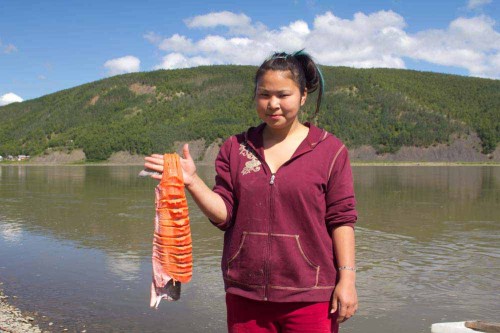
The people of Chuathbaluk, related to the Inuit and also technically Eskimos themselves, have relied upon a variety of local, wild game as their sustenance for literally thousands of years. They have hunted moose, geese, caribou, fished salmon and generally caught whatever animals were available in the surrounding areas. This has been their tradition, their way of life, their heritage and the very foundation of their culture for as long as they have known, for generations upon generations. And it is also one of their deepest desires to continue to carry that heritage and culture into future generations to come.
In recent years however, due mostly to overhunting and poor habitat conditions, moose and caribou are few and far between. Geese and other wild game have been steadily dwindling in numbers, as well. This year, the king salmon run has been barely harvestable, due to restrictions imposed by the Federal Subsistence Board, since the run last year was the smallest ever on record and this year’s is expected to be just as bad, if not worse. In fact, the situation is so grim for the king salmon (also called chinook salmon, which is the largest, most flavorful, most nutritious salmon, and also a staple food of the villagers), that a total harvest of up to only 1,000 King Salmon will be allowed this year and that harvest must be divided between a total of 32 villages, up and down the Kuskokwim River.

This in particular is a big deal and a heavy blow to many people surviving off the fish in the river. King salmon are what they have been relying on for food every winter for as long as they can remember. Tensions were running high within the last few weeks as restrictions prevented basic subsistence fishermen from filling their nets with king salmon as they normally would have been doing by this time of year. When restrictions were finally lifted there were so many fishermen eager to catch the prized salmon that boats clogged the river like a log jam, a situation which has never even been seen before. Tensions eased a bit as the smaller and less nutritious chum and sockeye salmon were still available for harvest, but the kings in particular were nowhere near as plentiful as many years passed.
Whether or not this is being caused by man or just a natural cycle is not 100% clear, although climate change is suspected in actually causing a drop in the temperature of the Bering Sea in recent years, which provides a less favorable condition for the kings to breed and inhabit.
Doug Molyneaux– a retired ADF&G Kuskokwim Area Research Biologist says:
“The Kuskokwim (and Yukon) are not due to overfishing, but fishing could protract or worsen the decline if public harvest expectations and practices do not change. There is debate as to the specific root cause or causes of the recent declines, but most accepted is climatic changes in the Bering Sea that are just not favorable for survival of kings salmon.”

However, the situation is made exponentially worse with recent, unusual increases in rain, bringing about warmer temperatures, sooner-than-normal ice-thaw and disastrous flooding to some more unfortunate towns, one of the most recent being Galena, Alaska, located to the north along the neighboring Yukon River. Another little known fact is that Alaska’s climate is warming nearly TWICE as fast as the rest of the United States. This on its own should be enough for at least some kind of concern.
In addition to this, because the region is so remote and difficult to access, the diesel fuel residents use to heat homes and power generators now costs $12 a gallon after shipping. Ground beef tops $7 per pound or more. Bringing in food via barges and aircraft is expensive as well, and most of what is actually able to make it there is either packaged, processed, and practically devoid of nutrients or old on the verge of going bad. To make matters even more complicated, the indigenous Yupic population is not trained or experienced in agriculture in the slightest, nor is it part of their heritage, so without outside help and intervention, the people of Chuathbaluk are on the verge of becoming almost completely dependent on having nearly all of their food shipped in, at a cost they can’t afford and without the resources to pay for it. Combine this with the fact that people keep leaving to go to other areas to find work and now you have a town that might not even exist just 20 or 30 years from now.
Mike Williams, chief of Yupiit Nation, a group of 19 tribes, says:
“Living out here, the highest cost of living in the nation and poorest people in the nation, we depend on surviving on the fish,”
Indeed, storm clouds are on the horizon, and not just for the residents of Chuathbaluk, but for dozens of communities just like them, that survived off the local land and animals long before Christopher Columbus even set foot on what is now called The United States of America. Something must be done to preserve these communities and their heritage and it must be done now, or these communities may not even be here for our children and our children’s children to see and experience.
Enter: The Blueberry Renaissance
Fortunately for the residents of Chuathbaluk, not all is lost. You see, one thing that the residents have going for them, is something that is naturally provided by the surrounding area, and that is blueberries. Chuathbaluk actually means “hills where the big blueberries grow.” And also fortunately for them, blueberries are a high commodity product and are consistently in high demand, and this can be taken advantage of and work well for the local village economy.
While the current blueberries that are found growing wild near the village are not enough to harvest and export, plans are being developed that will center the focus of the local economy around the production of blueberries. Not only that, but the community has formed a partnership that has drafted a vision statement providing high-level concepts as part of a master plan that will achieve on-site abundance of food and energy while also focusing on livability principles and the emotional and spiritual needs of those in the community, as well.
Robert Shields, Executive Director for the Alliance for Reason and Knowledge, says:
“The path we’re taking is one that focuses on the reality that truly prosperous and profitable communities are not built around lots of different things that have nothing to do with each other. In order to achieve the result of resilient and sustainable cities, communities, and even homes, you have to focus on all the systems working together.
Like growing a plant, if you want to have good fruit then you have to take everything into account. The soil, the water, the sunlight, the weather, and more. Communities are the same way. The needs and wants of the people within the community have to be taken into account, and all the different sectors are built to work together in synergy, such as waste, energy, food, commerce, and education, to create the vision the community wants. This is the approach we are taking in redeveloping this community.
They won’t ever need a strip mall, because that’s not what they want, and we’re not going to build it that way. Instead of just bringing in outside business and attempting to create random jobs that may or may not save the economy, we’re creating local, sustainable businesses, complete with spending plans for the community as a whole, while focusing on what they want and creating a resilient and adaptable living situation for the people involved at the same time. This is a whole new direction for communities.”
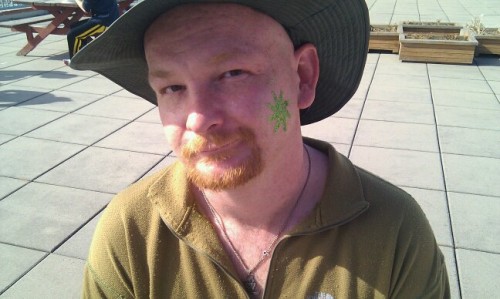
8 Critical Elements to Building a Resilient Community
1. Community
Community is the first and most critical thing to be addressed, as decisions made in the community planning aspects drive most of the other decisions made in the other areas. This addresses important issues such as how people will treat and relate to each other, to their neighbors, their coworkers, other communities, and also includes things like resource preservation and environmental conservation. This gets to the core of what makes life enjoyable, and asks people what exactly they want. Do you want to focus on being an eco-tourism hub? Manufacturing facility? Technology development? Agriculture? Heritage village? Each one of these focuses requires different establishments and systems that can often be combined into the same building structures to save costs and materials. For instance, a community’s administrative offices, school, health clinic, and emergency services could all be located in a single building.
This also addresses the population issue. Chuathbaluk currently has 150 people but they have expressed interested in possibly expanding to 500. These are two vastly different numbers which effect everything else. Quantities of resources needed and the size and scope of different systems need to be established to ensure long-term sustainability, with consideration for expansion taken into account.
2. Nutrition
Once you know how many people are in community, it’s time to address the nutritional needs for those individuals. Since a high level of health comes from not only what you are eating but also having an understanding of nutrition, this covers nutritional education and production of foods.
One of the main issues in rural communities such as Chuathbaluk, is that food production and agriculture is quite a revolutionary concept. These communities are still somewhat nomadic, and their current food relies upon moose, salmon, and other wild game. Taking the step toward agriculture is a significant adaptation in and of itself for these people. And even though there is no shortage of land, a short growing season and hostile climate require utilizing technologies like vertical farming and greenhouses to be able to provide a stable year-round food supply.
3. Economic Development
Economic development is the heart and key for survival beyond food and shelter. A solid economic foundation is built upon the fact that people don’t want handouts. They want opportunities to meet their needs in a fulfilling manner and to be able to contribute to others in the community.
Going into these communities and setting up McDonalds isn’t going to help anybody. The main opportunities in Alaska are science and information technology, agriculture, and geo/eco-tourism. Because of the open space available, there is significant opportunity for testing rocket-propelled devices and other aerospace technologies. Also, the fact that people can now run huge multinational business from home with nothing more than good internet connection has opened doors for new business owners that can work from practically anywhere in the world. Exploring these opportunities is critical to producing an educated and informed populace. In the case of Chuathbaluk, the most likely means to supporting the local economy will be through the commercial production of blueberries and geotourism.
4. Transportation
In the case of Alaska, implementing an effective, efficient means of transportation is one of the largest obstacles currently faced, and this is for multiple reasons. With wild game supplies in steady decline, people have to go further and further to find food. Another big issue is if you want to pay a dollar for something, it will cost you two dollars to get it there. Alaska has a great need to develop more cost effective transportation systems, and there are many, many things that a fast, efficient transportation system can be positively impacted by. A fast, effective, transportation system can bring in tourism, goods, services, and more. But with this in mind, there will also be a resolution to grow and manufacture more products locally and subsequently have to haul in less. The most efficient means of transportation that are currently being investigated to integrate into Alaska’s economy are ET3 (Evacuated Tube Transport Technologies) and dirigibles (blimps & zeppelins).
5. Education
If you want a community to grow and evolve, you must prepare fertile minds within that community and plant the seeds for growth. The more opportunities a community has, the more adaptable and resilient they will be and the more they will be able to thrive. Also, just as important as technical and book knowledge is how to be a constructive, critical thinker. Educated people see beyond their own needs and are able to view larger perspectives and the implications of their actions and as a result tend to be more responsible with their liberties. These are all necessities in order to facilitate an enlightened planetary civilization.
Core focuses will also include not only science and technology, but also engagement and getting people involved. It’s not enough to just read about how plants grow. People need to see it, experience it and take part in the process. Another core focus will also be on running business, especially with younger individuals, with the goals of getting them into administrative policy work at a relatively early age and teaching them skills that will enable them to run effective businesses for the rest of their lives. The goal is to inspire lifelong learners and critical thinkers that will become leaders in the community.
6. Waste
Society in general has a huge disconnect from the natural world in that we try to perpetuate endless consumption without regard to how or where the resources are coming from. A linear consumption system cannot be maintained in a circular environment, which is what we all live in. We need to recognize that waste items also have value and in many cases can be used just as effectively, if not even more effectively, than new resources. For instance, it’s possible to use waste plastic as a both a job creator and as an energy source. With a fractal distillation unit, heating up plastic gradually releases each type of chemical in a vapor form, one after another, which can then be harnessed and utilized. This method can take plastic trash and turn it into anything from motor oil to jet fuel. Waste plastic can also be used to create filament for 3d printers, or even make tourist souvenirs. The possibilities when it comes to waste recycling are truly endless.
(See video at the bottom of this page.)
7. Housing
Housing is one of last aspects to be considered, right before energy. This asks the main questions of basically what kind of structures people want to live in. Separate apartments? Communal type living in a large building with common areas? Individual houses with yards? This also looks at local styles while incorporating with modern efficiency standards (e.g., low-emissivity, triple pane windows being installed in a log cabin). This also extends to schools, government, recreational buildings, and businesses, among others.
8. Energy
Energy is one of the most critical components in modern society, but also one of the last things you deal with, because what you decide in every other category is going to affect the amount of energy you need. Redundancy and diversity are key components to establishing efficient energy production systems, as the more systems you have in place, the more backups you have in the event one system goes down. An inventory of possible methods of energy production must be taken with consideration for environmental impact, as well.
Currently, the methods of energy production being explored for the community of Chuathbaluk are wind, solar, geothermal, biofuels and micro-hydro, such as stream-side turbines in the neighboring streams and rivers. This also includes the possibility of using hydrogen fuel cells or hydrolysis to store excess energy for winter months. For many, the cost of these systems has been preventive, however in the case of a full community backed by investors, they will have the leverage to buy these products in bulk and save a significant amount of money while providing electricity for the entire community.
Current and Future Progress
A giant step and historic milestone, for both the city of Chuathbaluk and the state of Alaska, was achieved on June 20th, which was the adoption of a resolution to develop a master plan and build a truly sustainable community. The coordination and leveraging of federal policies and investments is also underway to procure funding and resources necessary to move forward with the development of the master plan.
Regarding sources of funding, Shields says:
“While we intend to work with local, state, and federal agencies on the exploration of options and development of the plan, the capital funding is expected to come from market driven investors. While all this may sound new and innovative only the location is. The idea of community ownership and community financing are leveraging the resources of small communities like Chuathbaluk in order to take successful business models and adapt them to serve Alaskan needs. These plans are being developed to be financially attractive to for-profit investors in the current economic system, even as we build a system that moves away from the current economic climate. This is the path that bridges the two worlds together.”
Robert and the Alliance of Reason and Knowledge are also currently in talks with another neighboring community to go down the same path. In the long run, he hopes to develop the city of Chuathbaluk into a model that can be followed for community development the world over. There are even overtures being made to encourage the city of Fairbanks, where Robert currently resides, to follow suit and join the Blueberry Renaissance.
With the advent of this type of community development, there is also the fact that new jobs will be created in the process, sprouting from developing communities searching for skilled individuals to install, operate and educate others about these systems, including agriculture, energy, green housing, and more. Those seeking meaningful employment in the environmental fields will find an abundance of new openings in the remote parts of Alaska and the state has the very realistic potential to become a mecca and model for a new breed of sustainable economy.
Many families, even some that I know personally, would love to take their children out of the chaos of modern society and be part of a peaceful green revolution. Especially as the towns and villages that are currently experiencing vast hardships are transformed into thriving, sustainable eco-communities. Opportunity abounds in situations like these for those that are interested in creating a more sustainable, prosperous world. And the prospect of being part of the change that you want to see in the world, well… there’s not much of a substitute for that.
Once the Blueberry Renaissance is in full motion it could spark a new era for Alaska’s economy and there could be a wave of people that will want to immerse themselves in this bold, new frontier and mindset, to take part, experience it, and help it grow. I see plenty of people relocating to Alaska and helping with this effort in the not-too-distant future and a budding, new economy and subsequent way of life, emerging, the likes of which we may have never seen before. And you never know… I just might be one of those people that joins the Blueberry Renaissance, myself. Maybe I’ll see you there…
Peace, light, love, and prosperity for Chuathbaluk. We’ll keep you updated.
For those that wish to participate or help with the Blueberry Renaissance in any way, shape, or form, please contact Robert Shields with the Alliance Of Reason And Knowledge (A.R.K.)
Website: http://a-r-k.us/
Email: [email protected]
